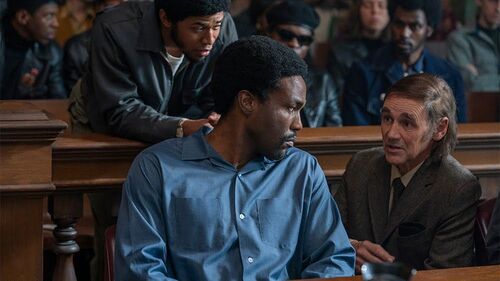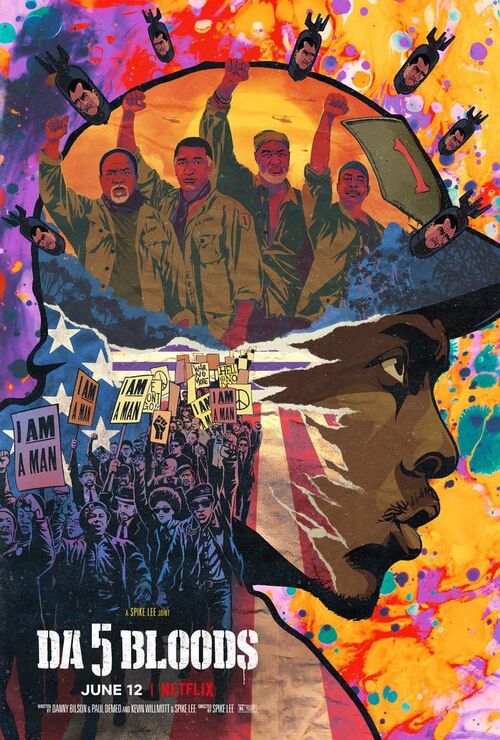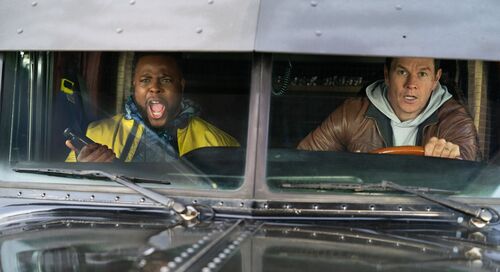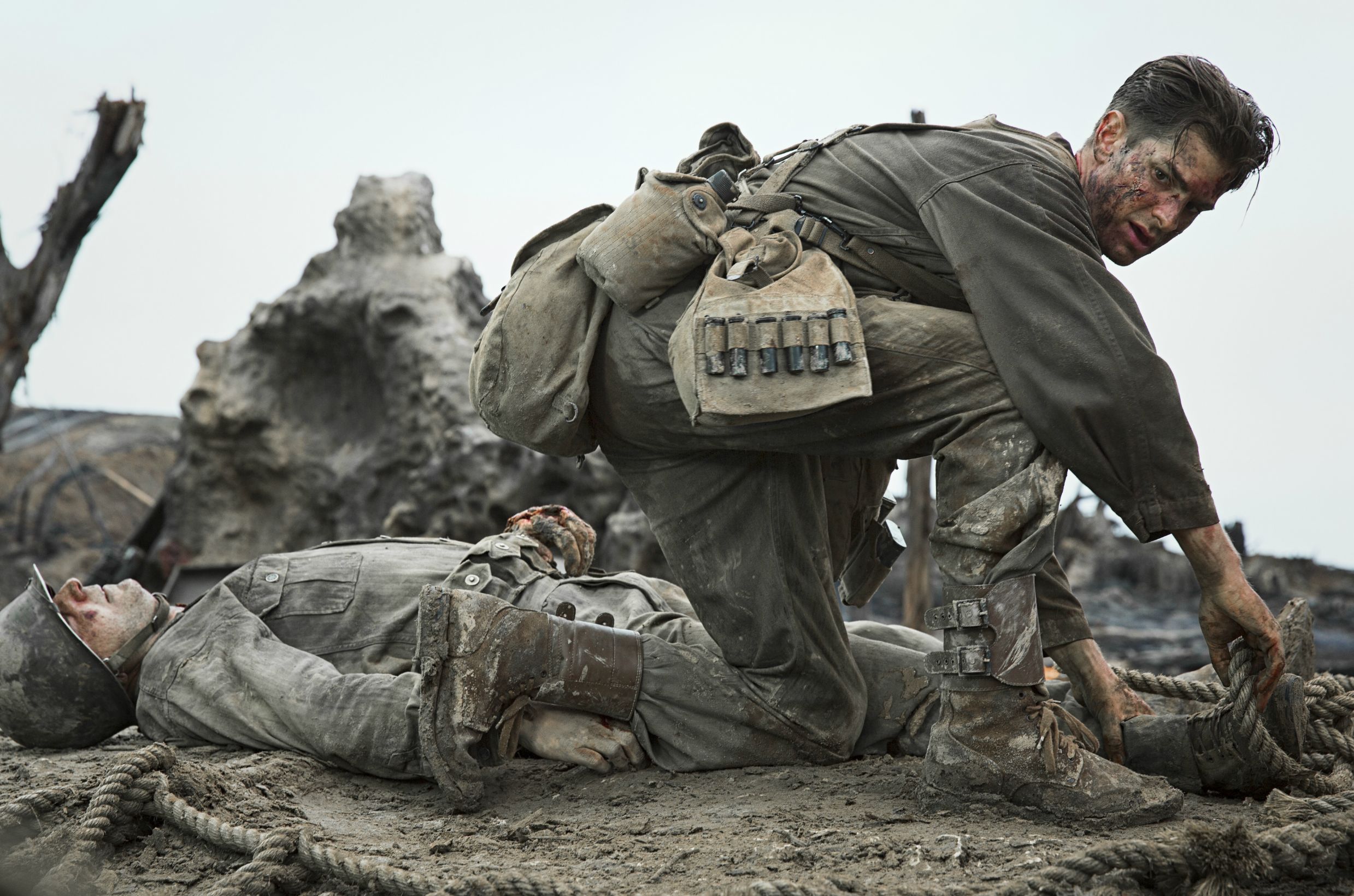
Hacksaw Ridge
 Mel Gibson’s Hacksaw Ridge embraces the paradox ethos ingrained in Christianity. This film is about a pacifist who goes above and beyond in the line of duty during the Second World War. It looks to affirm the value of human life amidst the carnage of intense bloody battles on the Japanese island of Okinawa where human life is spent in droves to very little avail.
Mel Gibson’s Hacksaw Ridge embraces the paradox ethos ingrained in Christianity. This film is about a pacifist who goes above and beyond in the line of duty during the Second World War. It looks to affirm the value of human life amidst the carnage of intense bloody battles on the Japanese island of Okinawa where human life is spent in droves to very little avail.
Gibson is no stranger to themes of faith and he is known to indulge his fair share of violence. He effectively flies the banner of brutal violence and faith in a film like The Passion of the Christ, mostly because we understood that, despite being transfixed by the knowledge that the visceral grisly optics, criticised as torture porn, it still remained the truth. We also have in Hacksaw Ridge a story about conviction that needs the violence around it to hit home although, as the film winds down, it becomes less meditative and more of an action fest – admittedly a very good one.
You could divide Hacksaw Ridge’s narrative into three distinct parts. The first part presents the childhood and our protagonist, Desmond T. Doss (Andrew Garfield), a Seventh-day Adventist who would go on to become a corporal in the army. We spend time with Doss amidst the bright and beaming aura of Virginia in the 1930s as key moments define his values and he finds love in what plays out as a regular family drama. We also meet Doss’ alcoholic dad, a World War I veteran, played brilliantly by Hugo Weaving who embodies screenplay’s motif of conflicting ideas.
Doss’ dad, Tom, carries the burden of losing his childhood friends to the Great War as he walks and drinks among their tombstones. He preaches nonviolence and wants his family to do nothing with the ongoing war. He is disgusted when Doss’ older brother announces to the family he has enlisted in the army after Pearl Harbour. But he has no problem taking the rod to his kids or beating his wife; going as far pointing a revolver at her in a drunken stupor. There is a grave sadness to Tom and when Doss finally decides to go to war, he genuinely cannot fathom why one would opt for the horrors of the battlefield - but he does, at least his arch tells us as much.
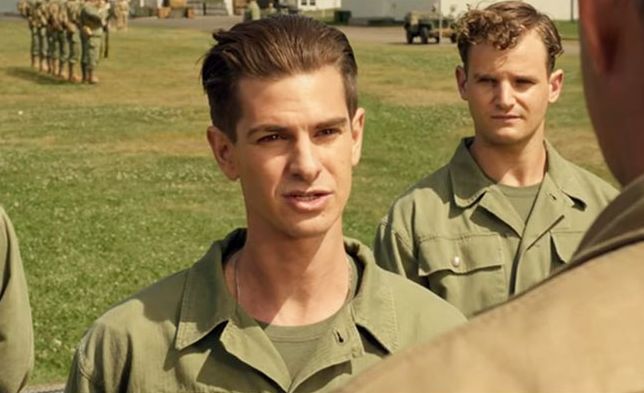
Off to war Doss goes, via boot camp and the promise of marriage to his gal, Dorothy – the side plot I wasn’t too keen. We proceed to the part of the film where Doss describes himself as a "conscientious collaborator" and refuses to pick up a rifle as he outlines his pacifist beliefs. He believes there is no real distinction between killing on the battlefield and murder. There is a degree of disbelief in the other soldiers’ faces who are being brewed for violence, andthis is where the contempt starts. Doss starts getting called a coward and bullied by his mates and other commanding officers keep pressuring Doss to pick up a rifle.
We also get a lot of humour in this section owing to Doss' drill sergeant who is amusingly portrayed by Vince Vaughn. He plays your stereotypical overbearing superior spewing colourful metaphors in deadpan and charismatic finery. Vaughn’s performance would have R. Lee Ermey smiling with glee. However, the smiles become harder to come by as the film progresses. The bright palette slowly dims as the skies start greying. A sense of palpable dread permeates through the screen as we inch closer to the grisly battle for Okinawa and Gibson effectively harnesses the primal horrors of war with ghastly shots of dead-eyed men and battered corpses returning from battle.
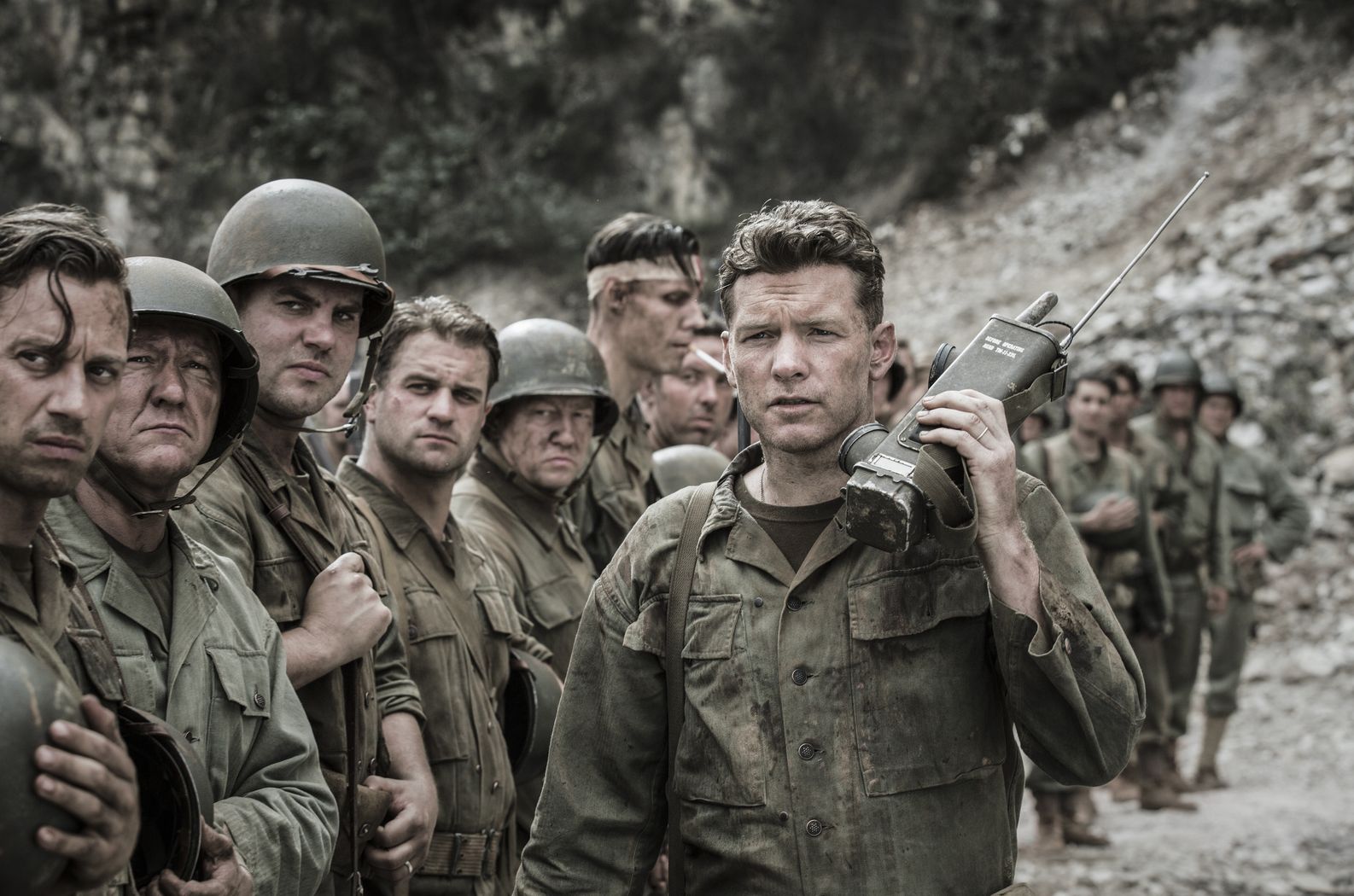
History tells us Doss rescued 75 of his brothers in arms so we expect that. But how intense does the violence get? Saving Private Ryan always comes to mind as the standard bearer of true wartime brutality. Gibson opts for something more kinetic as this film unrelenting in its bloody nastiness with bullets ripping through heads and torsos with anguishing detail ripe for the big screen. He has time for squeamish close shots of flowing guts and shredded limbs. It seems to revel in the prospect of having an audience gasp at the idea of a soldier having his lower half exist as a pile of bloody gore. Job well done with a $40 million budget.
Part of the reason we have this bloody detail is because we have Doss attending to the numerous wounded armed with morphine, gauze and his words of hope and assurance. We had heard a lot about our protagonist’s humanity and the film finally gets to show us when the bullets start flying. Everyone on the battlefield has the enemy in sight and is primed for killing. Doss just wants to save lives and he gets the chance to do so with great guile, guts and ingenuity in some thrillingly crafted moments. It is also during the final third we get a concrete reason for Doss’ convictions and we learn he also carried his own burden which he somewhat equates with the violence around him.
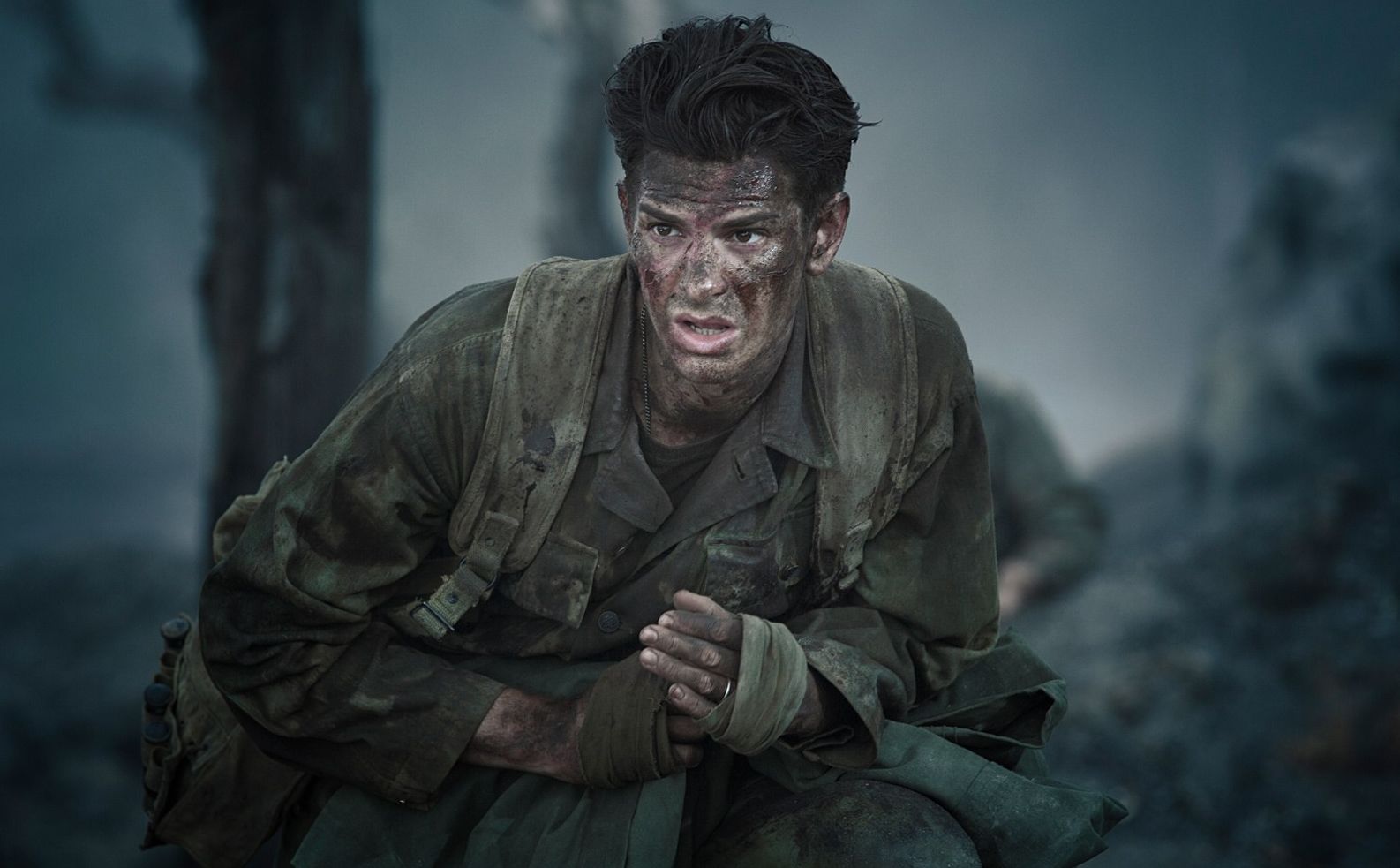
Garfield’s performance is to be lauded. He plays the cute stuff in the early parts well although there is more substance and intimacy to his relationship with his band of brothers on the battlefield than with his eventual wife. We find some depth in an earnest conversation Doss has with a fellow soldier, the steely-eyed Smitty (Luke Bracey), after the film’s first wave of violence. Smitty was one of the many soldiers who called Doss a coward for his beliefs but the disdain is replaced with respect as Gibson starts to angle Doss as the pure hero of this film as we transition into action thriller territory. In the final moments, the sight of Doss dragging a wounded soldier on a makeshift stretcher who mows down rabid Japanese soldiers in chase is a real treat.
Doss gives Hacksaw Ridge the enough character depth for us to invest in. I don’t know if Gibson could have reached for more in the futility embodying the eponymous Hacksaw Ridge and war in general. The soldiers' travails on the ridge convey the savage and harrowing cycle of death that was, in the grand scheme of things, eventually overcome with the victory over the Japs, but not really. V-J day ushered in the world with the spectre of a nuclear holocaust hovering over it.
For those nit picking and looking for more beyond the portrait of faith, pacifism and heroism that is Doss, a sense of dissatisfaction may linger. There is no doubt Hacksaw Ridge excels on a technical level but the only idea and Gibson remains consistent to the central idea of contradiction; Hacksaw Ridge is bold enough to preach pacifism in a setting that ploughs through human life then proceeds to wield a hero hailed for saving lives where we are used to regarding body counts.
-
By: Delali Adogla-Bessa/delalibessa@yahoo.com/Ghana
